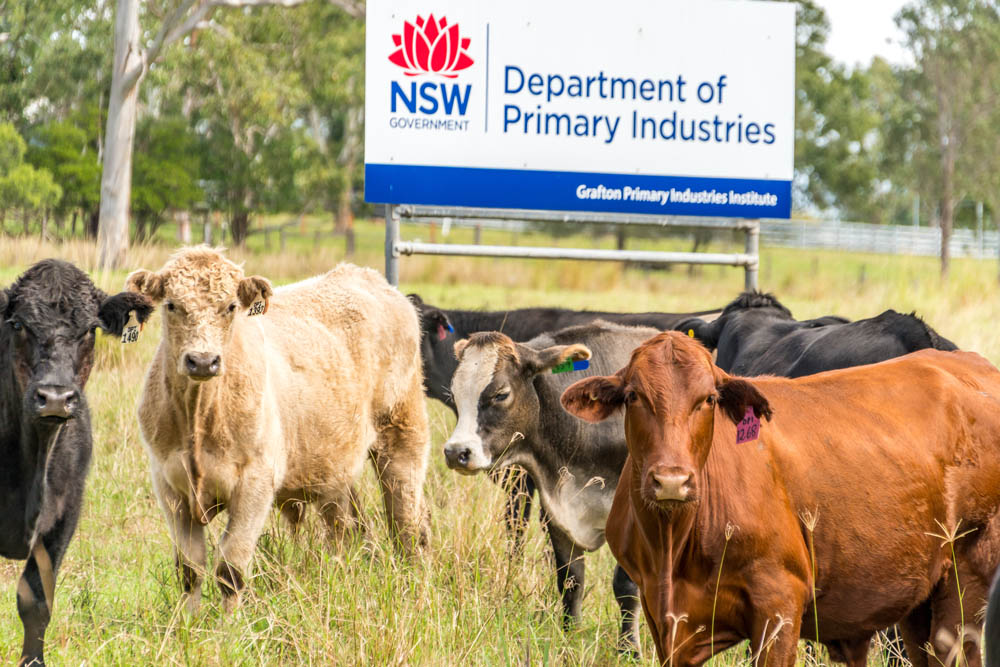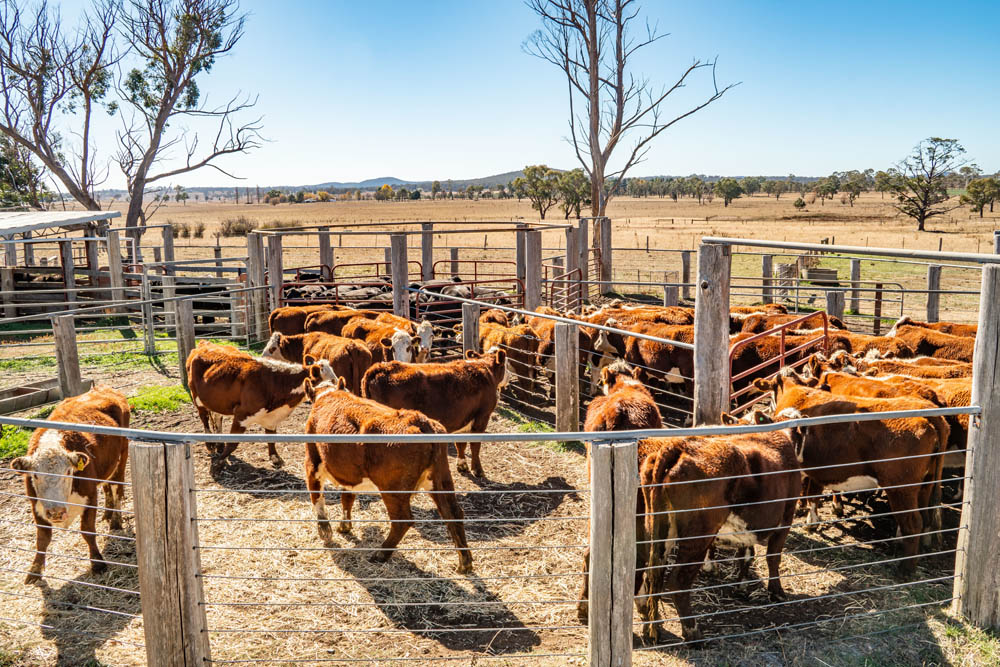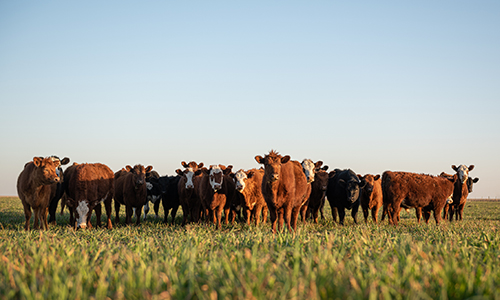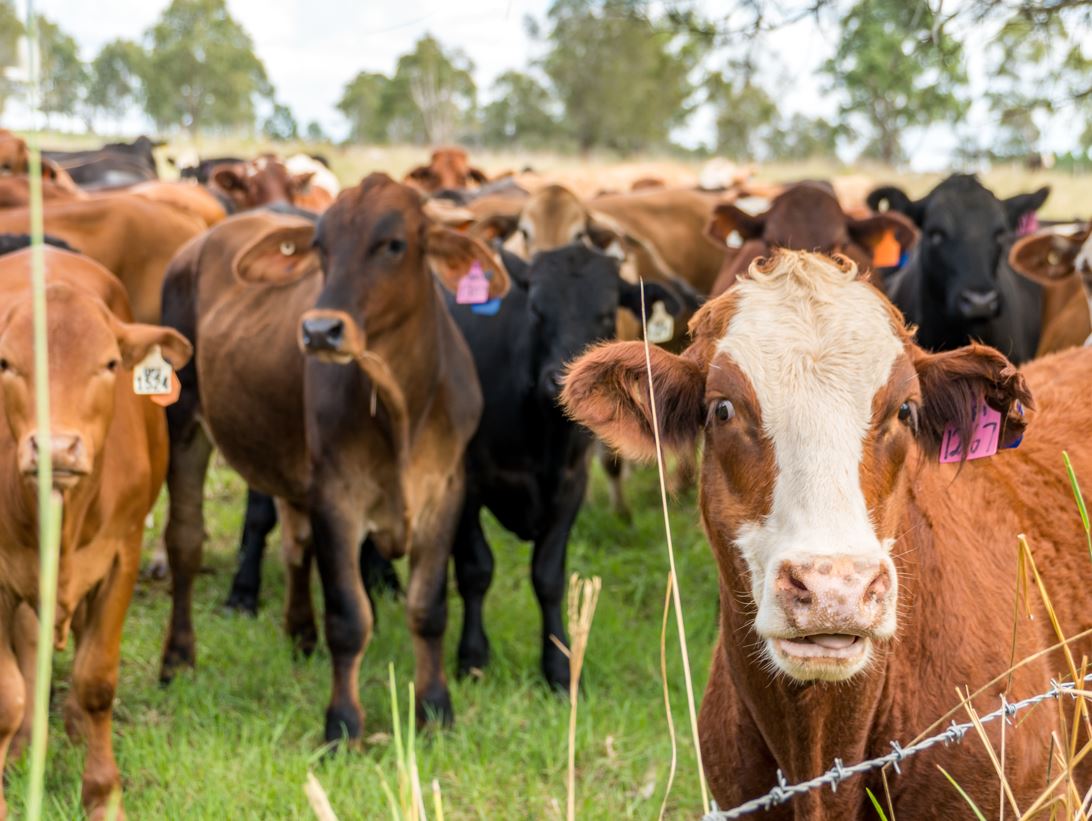- Output $2,490 million est. Down 9% yoy.
- Prices increased strongly as herd rebuilding commenced in earnest.
- Very high farmgate prices, lower export prices and reduced slaughter placed significant pressure on processors margins.
Production

Thomas Elders Markets estimated processor margin ($/Head)
- Processor margin
Australian and NSW Cattle Herd Size
- Australia (LHS)
- NSW (RHS)
Price
Even in inflation adjusted terms prices reached levels not seen since the 1960s and 1970s. 198

Australian beef farmgate annual price changes 2020-21
- Year end price rise
- Average 2020-21 price rise vs 2019-20
Eastern Young Cattle Indicator (EYCI) - nominal vs inflation adjusted (cents/kg cwt)
- Nominal EYCI
- Inflation adjusted EYCI
Trade
With lower supply, exports to all our major markets fell, however trade tensions with China did appear to have some impact with exports to China falling more than overall exports, down 33.4% 128 despite African Swine Fever continuing to create significant excess protein demand. China remained NSW’s biggest beef export destination however, China’s share of total exports fell from 36% to 33%. The impact of lower Chinese demand was more significant on total Australian exports, where exports to China fell 47% and share of total exports fell from 25% to 18%, dropping from the largest export market in 2019-20 to third largest. Whilst lower supply and higher prices have had some impact. China is now sourcing a greater share of beef from the United States, Argentina and Brazil and is also diversifying to other countries. 60
Chinese beef imports by source country (tonnes)
- US
- Australia
- Brazil
- Argentina
- NZ
- Uruguay
- RoW
Outlook
Internationally our high beef prices are decreasing our competitive position in key markets and the on-going trade dispute with China also has the potential to limit our access to the biggest beef importing market in the world. China’s pork herd is also rebuilding and once this rebuild gains traction, international demand for all red meats is expected to decline. Despite these challenges however, global demand for beef remains strong, especially for premium beef which Australia is well placed to supply. Despite the progress China is making in rebuilding their pork herd, for the time being African Swine Fever is creating a large global protein deficit and this is also supporting demand for red meat. Currently beef supply is struggling to meet international demand. Most major beef exporting countries are experiencing some supply challenges. Argentina has imposed periodic export controls to help control internal inflation. Other South American suppliers, including Brazil, have been selling females to meet Chinese demand which will have implications for their ability to meet future demand. Persistently dry conditions in the US have resulted in the US herd declining which will increase supply in the short term but will reduce competition when Australia’s own herd rebuild gains traction. These factors mean the Australian cattle industry remains well placed to supply a growing global appetite for premium beef.
Comparison of Australian retail prices of beef, lamb and chicken
- Dec '18
- Jun '21




